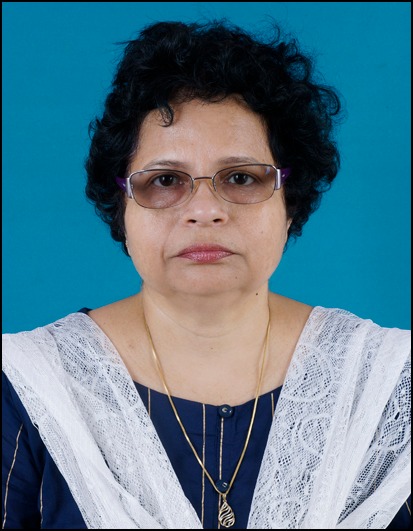per person /
Free
Data Warehousing and Data Mining
Course Attendees
Still no participant
Course Reviews
Still no reviews
Course Name : Data Warehousing and Data Mining
Code(Credit) : CUTM1035(2-2-0)
Course Outcomes
| COs | Course outcomes | Mapping COs with POs (High-3, Medium-2, Low-1) |
| CO1 | Gain the knowledge on Data Warehouse, Data Mining Principles | PO1 (3)-Engineering Knowledge. |
| CO2 | Analyze and describe complex data types with respect to spatial and web mining | PO2(3)-Problem Analysis |
| CO3 | Identify appropriate data mining algorithms to solve real world problems | PO2(3)Problem Analysis |
| CO4 | Design data warehouse with dimensional modeling and apply OLAP operations | PO3 (3)-Design / Development of Solutions |
| CO5 | Benefit the user experiences towards research and innovation integration | PO4(2)-Investigations of Complex Problem |
Course Syllabus
Module I: Data Mining Functionalities (09 hrs)
Data Mining Functionalities, Data Mining Task Primitives, Integration of a Data Mining System with a Database or a Data Warehouse System, Major issues in Data Mining. Data Pre-processing: Need for Pre-processing the data, Data Cleaning, Data Integration and Transformation, Data Reduction, Discretization and Concept Hierarchy Generation.
Practice:
- Write a program to demonstrate Pre-processing program on Cancer.arff
- Write a program to demonstrate Visualization on Crop-yield. Arff.
Module II: Data Warehouse (09 hrs)
Data warehousing; The need for Data Warehousing, the Building blocks of Data Warehouse, Data Warehouses and Data Marts, an overview of the components, metadata in the Data Warehouse, trends in Data Warehousing, Multidimensional Data Model, Data Warehousing Architecture, Data Warehouse Implementation, Further Development of Data Cube Technology, From Data Warehousing to Data Mining, Data Cube Computation and Data Generalization
Practice:
- Write a program to analyze Weather.arff using Naive Bayesian algorithm.
- Write a program to analyze Covid.arff using J-48.
Module III: OLAP Technology for Data Mining (07 hrs)
Data Warehouse and OLAP Technology, MOLAP, ROLAP, HOLAP, Difference between OLTP and OLAP.
Practice:
- Do Analytical operations in 1) Roll-up 2) Drill-down 3) Slice 4) Dice and 5) Pivot.
Module IV: Mining Frequent Patterns, Associations and Correlations (07 hrs)
Mining Frequent Patterns, Associations and Correlations: Efficient and Scalable Frequent Itemset, Mining Methods, Mining various kinds of Association Rules, From Association Mining to Correlation Analysis, Constraint-Based Association Mining.
Practice:
- Write a program to demonstrate association rule mining using Apriori algorithm (Market-basket-analysis.arff).
- Writing programs to access the data from PDF and SQL file.
Module V: Accessing data from different databases (07 hrs)
Accessing data from Excel file, Notepad file, Access file, Word file, SQL file, PDF file and Image file.
Practice:
- Writing programs to access the data from Excel, Notepad, Access and Word file.
- Writing programs to write program output into different files, appending columns (output/results) into an existing file using Python.
- Write a program to demonstrate Pre-processing on Soil.arff
Module VI: Mining Streams, Time Series and Sequence Data (08 hrs)
Mining Streams, Time Series and Sequence Data: Mining Data Streams, Mining Time- Series, Data, Mining Sequence Patterns in Transactional Databases, Mining Sequence Patterns in Biological Data, Graph Mining, Social Network Analysis Multi Relational Data Mining and Spatial Data Mining.
Practice:
- Write a program to demonstrate Pre-processing and Visualization on Student
arff
Module VII: Mining Object, Spatial, Multimedia, Text and Web Data (07 hrs)
Multidimensional Analysis and Descriptive Mining of Complex Data Objects, Spatial Data Mining, Multimedia Data Mining, Text Mining, Mining the World Wide Web, Applications and Trends in Data Mining.
Practice:
- Write programs to analyze text dataset.
TEXT BOOKS:
- Data Mining Concepts and Techniques - Jiawei Han &MichelineKamber, Morgan Kaufmann Publishers, Elsevier,2nd Edition, 2006.
- Introduction to Data Mining Pang-Ning Tan, Michael Steinbach and Vipin Kumar, Pearson education.
REFERENCE BOOKS:
- Data Mining Techniques Arun K Pujari,2nd edition, Universities Press.
- Data Warehousing in the Real World Sam Aanhory& Dennis Murray Pearson Edn Asia.
- Insight into Data Mining, K.P.Soman, S.Diwakar,V.Ajay,PHI,2008.
- Data Warehousing Fundamentals Paulraj Ponnaiah Wiley student Edition
- Data Mining: Introductory and Advanced Topics by Margaret Dunham, Pearson
Session Plan
Session 1 & 2
Data Mining Functionalities:
https://www.youtube.com/watch?v=SW7-o86iL3w
https://www.geeksforgeeks.org/tasks-and-functionalities-of-data-mining/
https://www.slideshare.net/Krish_ver2/12-steps-and-functionalities-47818567
Data Mining Task Primitives:
https://www.youtube.com/watch?v=eKk25rfSVKI
http://www.brainkart.com/article/Data-mining-primitives_8311/
https://www.slideshare.net/lavanyamarichamy/data-mining-primitives
Session 3 & 4
Integration of a Data Mining System with a Database or a Data Warehouse System:
https://www.youtube.com/watch?v=OIpkcxc-CVM
https://www.geeksforgeeks.org/data-integration-in-data-mining/
https://www.slideshare.net/akannshat/data-mining-15329899
Major issues in Data Mining, Data Pre-processing
https://www.youtube.com/watch?v=5zu562m1290
https://www.geeksforgeeks.org/data-preprocessing-in-data-mining/
https://www.slideshare.net/jasonrodrigues/data-preprocessing-5609305
Session 5 & 6
Practice 1:
Write a program to demonstrate Pre-processing program on Cancer.arff
Session 7 & 8
Data Cleaning, Data Integration and Transformation:
https://www.youtube.com/watch?v=sGxRNDxONLg
https://www.ques10.com/p/122/explain-data-integration-and-transformation-with-1/
https://slideplayer.com/slide/5745639/
Data Reduction, Discretization and Concept Hierarchy Generation:
https://www.youtube.com/watch?v=JkO8hj3tkpo
http://easydwm.blogspot.com/p/data-discretization-concept-hierarchy.html
https://www.slideshare.net/Krish_ver2/18-discretization
Session 9
Practice 2:
Write a program to demonstrate Visualization on Crop-yield. Arff
Session 10 & 11
Data Warehouse, Multidimensional Data Model
https://www.youtube.com/watch?v=cHcyrza0woc
https://www.javatpoint.com/data-warehouse-what-is-multi-dimensional-data-model
Data Warehouse Architecture, Data Warehouse Implementation
https://www.youtube.com/watch?v=CHYPF7jxlik
https://www.slideshare.net/SHIKHAGAUTAM4/warehouse-planning-and-implementation
https://www.geeksforgeeks.org/data-warehouse-architecture/
https://www.slideshare.net/jagdish_93/multidimentional-data-model-14699215
Session 12 & 13
Further Development of Data Cube Technology
https://www.youtube.com/watch?v=lIRsMQ1DyKo
https://homepages.cwi.nl/~manegold/DBDM/Leiden-DBDM-06-CubeTech-2x2.pdf
https://www.slideshare.net/algum/data-cubes-7923771
From Data Warehousing to Data Mining Data Cube Computation
https://www.youtube.com/watch?v=5jFjpnS-ZzM&t=39s
https://www.skedsoft.com/books/data-mining-data-warehousing/methods-for-data-cube-computation
https://www.slideshare.net/rashmisheikh/data-cube-computation
Session 14 & 15
Practice 3:
Write a program to analyze Weather.arff using Naive Bayesian algorithm.
Session 16
Data Generalization: Efficient Methods for Data Cube Computation
https://www.youtube.com/watch?v=jI6Cie-fQls
http://citeseerx.ist.psu.edu/viewdoc/download;jsessionid=56981CC19297ADD544A9076520F1C648?doi=10.1.1.295.7494&rep=rep1&type=pdf
https://www.slideshare.net/dataminingtools/data-cube-computation-and-data-generalization
Session 17 & 18
Practice 4:
Write a program to analyze Covid.arff using J-48.
Session 19 & 20
OLAP Technology
https://intellipaat.com/blog/tutorial/data-warehouse-tutorial/what-is-olap-and-multidimensional-model/
https://www.youtube.com/watch?v=pM--s4szPnQ
MOLAP
https://www.youtube.com/watch?v=LzmAbi5ZOhE
https://www.guru99.com/multidimensional-online-analytical-processing.html
Session 23
Difference between OLTP and OLAP
https://www.geeksforgeeks.org/difference-between-olap-and-oltp-in-dbms/
Session 24 & 25
Practice 5:
Do Analytical operations in 1) Roll-up 2) Drill-down 3) Slice 4) Dice and 5) Pivot
Session 26
Mining Frequent Patterns
https://www.youtube.com/watch?v=QN3_wxqnSlw
https://www.dataversity.net/frequent-pattern-mining-association-support-business-analysis/
https://www.slideshare.net/pashadon143/3-mining-frequent-patterns
Associations and Correlations
https://www.youtube.com/watch?v=xUz27_qyd-Q
https://www.theanalysisfactor.com/the-difference-between-association-and-correlation/
https://www.slideshare.net/dataminingcontent/mining-associations-and-correlations
Session 27
Efficient and Scalable Frequent Itemset Mining Methods
https://www.youtube.com/watch?v=h_l3b2CIQ_o
https://www.geeksforgeeks.org/frequent-item-set-in-data-set-association-rule-mining/
https://www.slideshare.net/Nilesh_raghav/frequent-itemset-mining-methods
Mining various kinds of Association Rules
https://www.youtube.com/watch?v=gymLwyR0dZg
https://www.geeksforgeeks.org/association-rule/
https://www.slideshare.net/dama2211/association-rule-mining-59734836
Session 28 & 29
Practice 6:
Write a program to demonstrate association rule mining using Apriori algorithm (Market-basket-analysis.arff).
Session 30
Association Mining
https://www.youtube.com/watch?v=5W1bMtXfUa4
https://www.upgrad.com/blog/association-rule-mining-an-overview-and-its-applications/
https://www.slideshare.net/dama2211/association-rule-mining-59734836
Association Mining to Correlation Analysis
https://www.youtube.com/watch?v=QN3_wxqnSlw&t=28s
http://www.brainkart.com/article/Association-Mining-to-Correlation-Analysis_8318/
https://www.slideshare.net/hktripathy/lect7-association-analysis-to-correlation-analysis
Constraint-Based Association Mining
https://www.youtube.com/watch?v=HRO3RkOHe_4
http://www.brainkart.com/article/Constraint-Based-Association-Mining_8319/
https://www.slideshare.net/dama2211/association-rule-mining-59734836
Session 31 & 32
Practice 7:
Writing programs to access the data from PDF and SQL file.
Session 33
Accessing data from Excel file, Notepad file, Access file, Word file, SQL file, PDF file and Image file.
Macro to extract data from Word table to Excel | Excel VBA
Session 34 & 35
Practice 8:
Writing programs to access the data from Excel, Notepad, Access and Word file.
Session 36 & 37
Practice 8:
Writing programs to write output into different files, appending columns (output/results) into existing file using Python.
Session 38 & 39
Practice 8:
Write a program to demonstrate Pre-processing on Soil.arff.
Session 40 & 41
Mining Data Streams, Mining Time-Series
https://www.youtube.com/watch?v=SRTSVxUnsNI
http://infolab.stanford.edu/~ullman/mmds/ch4.pdf
https://www.slideshare.net/Krish_ver2/51-mining-data-streams
https://www.mimuw.edu.pl/~son/datamining/DM/Time%20Series%20Data%20Mining.pdf
https://www.slideshare.net/Krish_ver2/52-mining-time-series-data
Mining Sequence Patterns in Transactional Databases
https://www.youtube.com/watch?v=GhEteXWNIXc
http://hanj.cs.illinois.edu/cs412/bk3/7_sequential_pattern_mining.pdf
https://www.slideshare.net/Krish_ver2/53-mining-sequential-patterns
Session 42 & 43
Mining Sequence Patterns in Biological Data, Graph Mining
https://www.youtube.com/watch?v=GhEteXWNIXc&t=38s
https://www.youtube.com/watch?v=HwgaQW2rzBE
http://web.cs.ucla.edu/~yzsun/classes/2018Fall_CS145/Slides/chapter_8_sequence.pdf
https://www.slideshare.net/Krish_ver2/54-mining-sequence-patterns-in-biological-data
https://www.cs.helsinki.fi/u/langohr/graphmining/slides/chp1.pdf
https://www.slideshare.net/Krish_ver2/55-graph-mining
Session 44 & 45
Practice 11:
Write a program to demonstrate Pre-processing and Visualization on Student.arff
Session 46 & 47
Social Network Analysis Multi-Relational Data Mining, Spatial Data Mining
https://www.youtube.com/watch?v=0xsM0MbRPGE
https://www.youtube.com/watch?v=uHronVrSSdw
https://docplayer.net/5372048-9-1-graph-mining-social-network-analysis-and-multirelational-data-mining-graph-mining.html
https://www.slideshare.net/dataminingtools/graph-mining-social-network-analysis-and-multi-relational-data-mining
http://www.jaist.ac.jp/~bao/talks/SpatialDM.pdf
https://www.slideshare.net/raazj3/spatial-datamining
Session 48 & 49
Multidimensional Analysis and Descriptive Mining of Complex Data Objects
https://www.youtube.com/watch?v=fdsXhGnZlAg
Session 50 & 51
Spatial Data Mining, Multimedia Data Mining, Text Mining, Mining the World Wide Web,
Session 52
Applications and Trends in Data Mining.
https://www.slideshare.net/Tommy96/chapter-11-applications-and-trends-in-data-mining
Session 53 & 54
Practice 13:
Write programs to analyze text dataset.
Case Studies: 1
Suppose that a data warehouse consists of four dimensions “customer”, “product”,“sales_person”and “sales_time”, and the three measures Sales_Amt (in rupees), VAT (inrupees) and Payment_type (in rupees). Draw the different classes of schemas that are popularly used for modelling data warehouses.
Case Studies: 2
Assume that a data warehouse consists of the three dimensions “Time”, “Doctor” and“Patient”, and the two measures “count”, and “charge” where charge is the fee that a doctor charges a patient for a visit. Enumerate and draw all the schema diagrams this case.
Our Main Teachers

Dr. Sujata Chakravarty is a Senior Member of IEEE. Her research area includes multidisciplinary fields like Application of Computational Intelligence and Evolutionary Computing Techniques in the field of Financial Engineering, Bio-medical data classification, Smart Agriculture, Intrusion Detection System in Computer-Network, Analysis and prediction of different financial time series data. She is a reviewer of many […]


Prof. Susanta Kumar Nayak Working as Assistant Professor in Department of Computer Science & Engineering, Centurion University of Technology & Management, paralakhemundi,odisha . He completed MCA, MBA(HR), Ph.D. [(Pursuing). He has been an Academician from last 16.5 years. Previously he Worked as Assistant Professor in MCA Programme in Bharati Vidyapeeth Deemed University, Pune, Institute of Management Kolhapur […]

